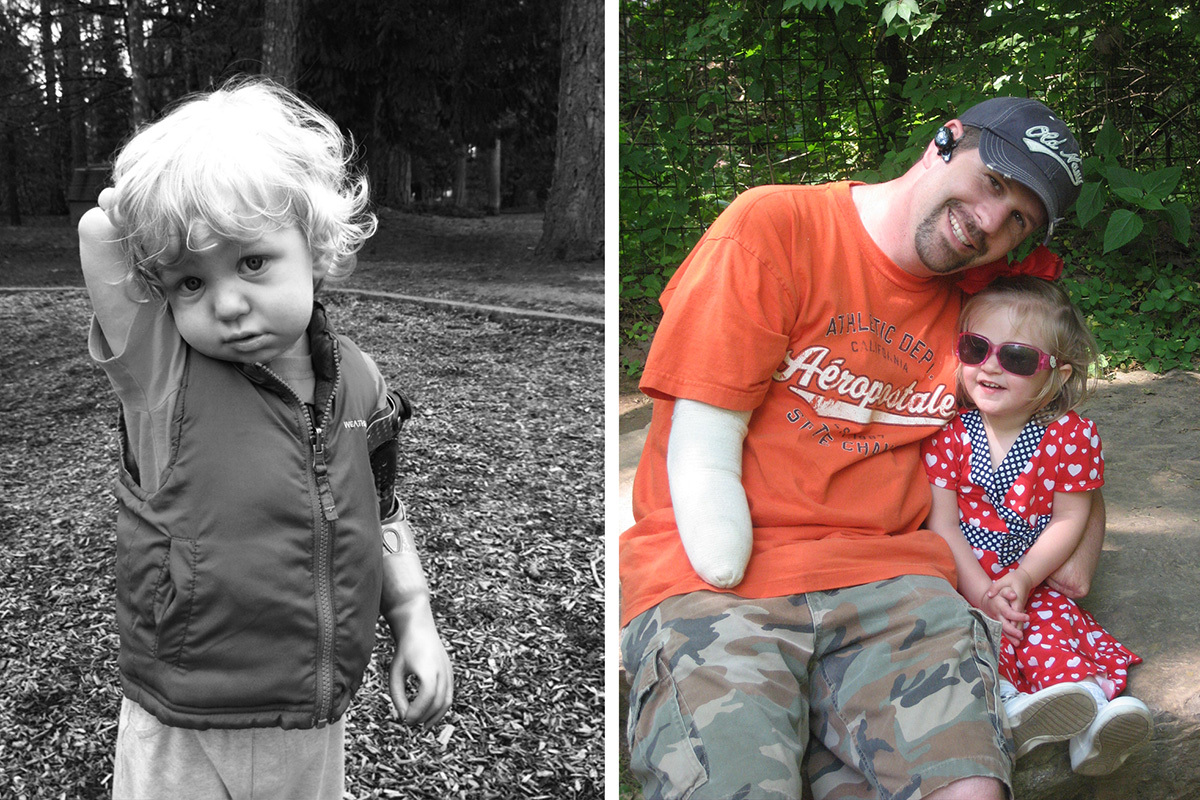Hello from Amber! I’m part of the Arm Dynamics marketing department and responsible for much of our social media and blog content. I started this job in the fall of 2019 and since then I’ve absorbed a lot of information about the world of upper limb loss and difference, and about the prosthetic industry — but I still have more to learn.
This Limb Difference Awareness Month, I find myself reflecting on the past year — and what a strange year it’s been! Regardless of the pandemic, people are still in need of prosthetic care. I’ve been honored to be a part of our great team. My coworkers have taught me so much, but even more than them, our patients have helped me understand the world of limb difference.
Here are some things I’ve learned during my journey:
1. If you’ve met one person with a limb difference, you’ve met one person with a limb difference.
You may have heard this sentiment about other differences — people who have Down syndrome or people who have autism. The idea is that you can’t generalize about people just because they have something in common. I feel like it goes double for those with a limb difference. Not only is each person’s amputation level slightly different, they also approach it differently. Some people won’t leave the house without their prosthesis, while others may only want an activity-specific device for the gym. Some love their body-powered devices, and others can’t imagine life without their myoelectric. Some people may choose to undergo surgery, like for a toe-to-thumb transfer. For some people, the most important thing is that their device looks like a “typical” sound hand, while others may opt for no device at all. It has been pretty overwhelming to understand all the options available, but what’s amazing is that all of these options exist! Not only do they exist, but we are moving toward a space where many of those options are becoming acceptable to both the person with the limb difference and society at large.
2. Disability is a … divisive word.
I’ve heard people with congenital limb loss say things like, “I’ve never thought of myself as disabled.” Which, in some ways, is great. I’m glad to hear that so many people have been supported in ways that made them feel like their limb difference has never limited them. But I do hope that statements like that don’t perpetuate the idea that being labeled as someone with a disability is synonymous with being “less.” There is nothing wrong with having a disability, and people should choose how they want to be identified. I hope people keep both things in mind. The subject is complicated — here’s a great blog article about the disability label from an adaptive athlete named Jamie Gane.
3. It’s not always easy to get a device!
When someone has a lower limb difference, I have heard (anecdotally) that insurance companies are more likely to approve a prosthesis because walking is seen as a necessary part of being a functioning human. But to receive a prosthesis for an upper limb difference, proving that the device is medically necessary is often a troublesome hoop to jump through. This can make the appeals process difficult. Not impossible by any means! People just need to be prepared to advocate for themselves.
4. The technology is amazing and getting better.
While we are not at the "Luke Skywalker" stage quite yet, we are getting closer. The devices we have now can look just like human hands and can move in ways that are similar to a sound hand, including new surgery and technology options that can allow some amputees to move their device's fingers individually. For those that are into the “robotic” look, there are some way-cool devices out there. Bringing a level of creativity to one’s device can spark joy and add a layer of individuality.
5. Upper limb prosthetic care requires a different set of skills than lower limb prosthetic care.
I was, of course, aware of this as a concept before I started working for this company. But learning about this company and how much they’ve worked toward understanding how to fit people with comfortable upper limb prostheses — it’s become very clear that there’s no comparison between receiving care from a company that specializes in upper limb and a company that does mostly lower limb prosthetic care and the occasional upper limb device.
Many members of our Arm Dynamics team have been working in this industry for over twenty years and they’re still learning new things every day. While that’s daunting, my curiosity is what drives me to keep discovering what else is out there in the world of upper limb prosthetic care.
What have you learned? Or what should be next on my list? Please leave a comment below!






.jpg?width=900&height=600&name=Jamison%20Young-Old%20Listing%20(2).jpg)

%20President%20and%20Senior%20Clinical%20Director.jpg?width=600&height=600&name=John%20M.%20Miguelez%2c%20CP%2c%20FAAOP(D)%20President%20and%20Senior%20Clinical%20Director.jpg)










Comments (2)